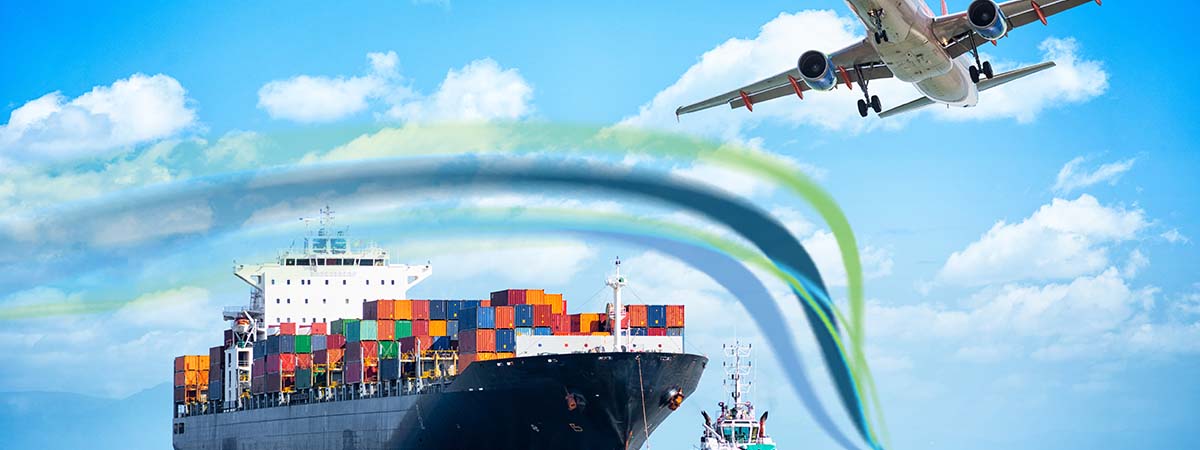Sea freight and carbon footprint
There is so much potential to reduce the carbon footprint that the shipping industry leaves behind, and there is so much untapped potential to make this happen. There are many operational and technical methods to help reduce carbon footprint, such as slow steaming, weather routing, contra-rotating propellers and propulsion efficiency devices. In 2015, it was realised that shipping emissions represent around 13% of the overall EU greenhouse gas emissions from the transport industry. This is a significant percentage.
The EU has since stepped in order to aid the efforts in reducing greenhouse gas emissions. The EU set out and came up with a strategy in order to accomplish this. This strategy consists of three steps:
• Monitor, report and verify CO2 emissions from large ships that are using EU ports.
• Set out greenhouse gas reduction targets for the maritime transport industry.
• Further measures for the medium to long term, including market-based measures.
Calls to action have been made to start addressing the concerns surrounding the environmental impact that the shipping industry can have. The directive also states that the Commission should regularly review IMO (International Maritime Organisation) actions and also all calls to action by the IMO to address shipping emissions from the IMO or the EU to start from 2023.
Recently, there have been legislations put in place in order to attempt to reduce emissions produced by large ships. For example, there was legislation put in place 1st January 2018 that states large ships over 5,000 gross tonnage loading or unloading cargo or ports in the EEA (European Economic Area) must monitor and report their related CO2 emissions and any other information that may be of relevance.
According to the European Commission, the main obligations for companies eligible under the EU MRV Regulation are:
• “Monitoring: From 1 January 2018, companies shall – in line with their respective monitoring plans – monitor for each of their ships CO2 emissions, fuel consumption and other parameters, such as distance travelled, time at sea and cargo carried on a per voyage basis, so as to gather annual data into an emissions report submitted to an accredited MRV shipping verifier.
• Emissions report: From 2019, by 30 April of each year, companies shall, through THETIS MRV, submit to the Commission and to the States in which those ships are registered (‘flag States’) a satisfactorily verified emissions report for each ship that has performed maritime transport activities in the European Economic Area in the previous reporting period (calendar year).
• Document of compliance: From 2019, by 30 June of each year, companies shall ensure that all their ships that have performed activities in the previous reporting period and are visiting ports in the European Economic Area carry on board a document of compliance issued by THETIS MRV. This obligation might be subject to inspections by Member States' authorities.”
Air freight and carbon footprint
The amount of aviation travel that has been occurring over the last couple of decades has risen by a very significant amount. This is largely due to the amount of traffic that has been using the method of aviation.
Under the EU Emissions Trading System (EU ETS), every airline operating in Europe are required to monitor, report and verify all their emissions. Each airline receives tradeable allowances that will cover a certain level of emissions from their flights per year.
There are concerns over the amount of emissions that transport industries are producing, and CEO of DB Schenker, Jochen Thewes, has said:
“There is no doubt that has to be the number-one priority in the industry,” he said. “We can’t continue to do business the way we’ve done it so far.
“I really believe this is no longer a ‘nice-to-have’; there is real customer engagement and doing nothing will be a competitive disadvantage.”
In conclusion, both methods of transport, aviation and shipping, omit greenhouse gases and leave a carbon footprint. There are many other factors that may impact your decision to choose either air freight or sea freight.
If you would like any extra information about choosing either air freight or sea freight methods, please don’t hesitate to get in touch.
